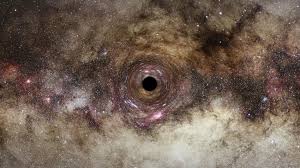Astronomers have identified the largest stellar black hole ever discovered in the galaxy, with a mass 33 times that of the Sun, according to a report published on Tuesday.
It has been named Gaia BH3. The black hole of this name was suddenly discovered “by chance” from data collected by the European Space Agency’s Gaia mission, Pasquale Panuzzo, an astronomer at the National Center for Scientific Research (CNRS) at the Observatoire de Paris, told AFP news agency. Gaia, which is the largest black hole in the Milky Way galaxy, is located BH3 2,000 light-years from Earth in the constellation Aquila.
Astronomers said – this is amazing
Since Gaia’s telescope can give the exact position of the stars in the sky, astronomers were able to mark their orbits and measure the invisible mass of the stars, they discovered that there is such a big black hole which is 33 times the mass of the Sun. He said that after being seen from the telescopes on the ground, it was confirmed that it was a black hole whose mass was much more than the stellar black holes already known in the galaxy.
Panuzzo said in a press release, “No one expected to find a high-mass black hole hidden nearby, which has not been detected till now. This kind of discovery is something you make only once in your research life.”
How does a black hole form?
The stellar black hole was discovered when scientists noticed a “wobbly” motion on a companion star orbiting it. Panuzzo said, “We were watching a star slightly smaller than the Sun (about 75 percent of its mass) and brighter, which was revolving around an invisible star.”
Stellar black holes are formed by the collapse of massive stars at the end of their lives and are smaller than supermassive black holes whose composition is still unknown, Panuzzo said. Such giants have already been detected in distant galaxies through gravitational waves but are still rare.
He said that in fact, BH3 is a “passive” black hole and it is so far from its companion star that its matter is not separated from it and hence does not emit any X-rays – making it difficult to detect.
Gaia’s telescope has identified the first two passive black holes (Gaia BH1 and Gaia BH2) in the galaxy. Gaia has been operating 1.5 million kilometers from Earth for the last 10 years and has sent 3D maps of the position and motion of more than 1.8 billion stars in 2022.




